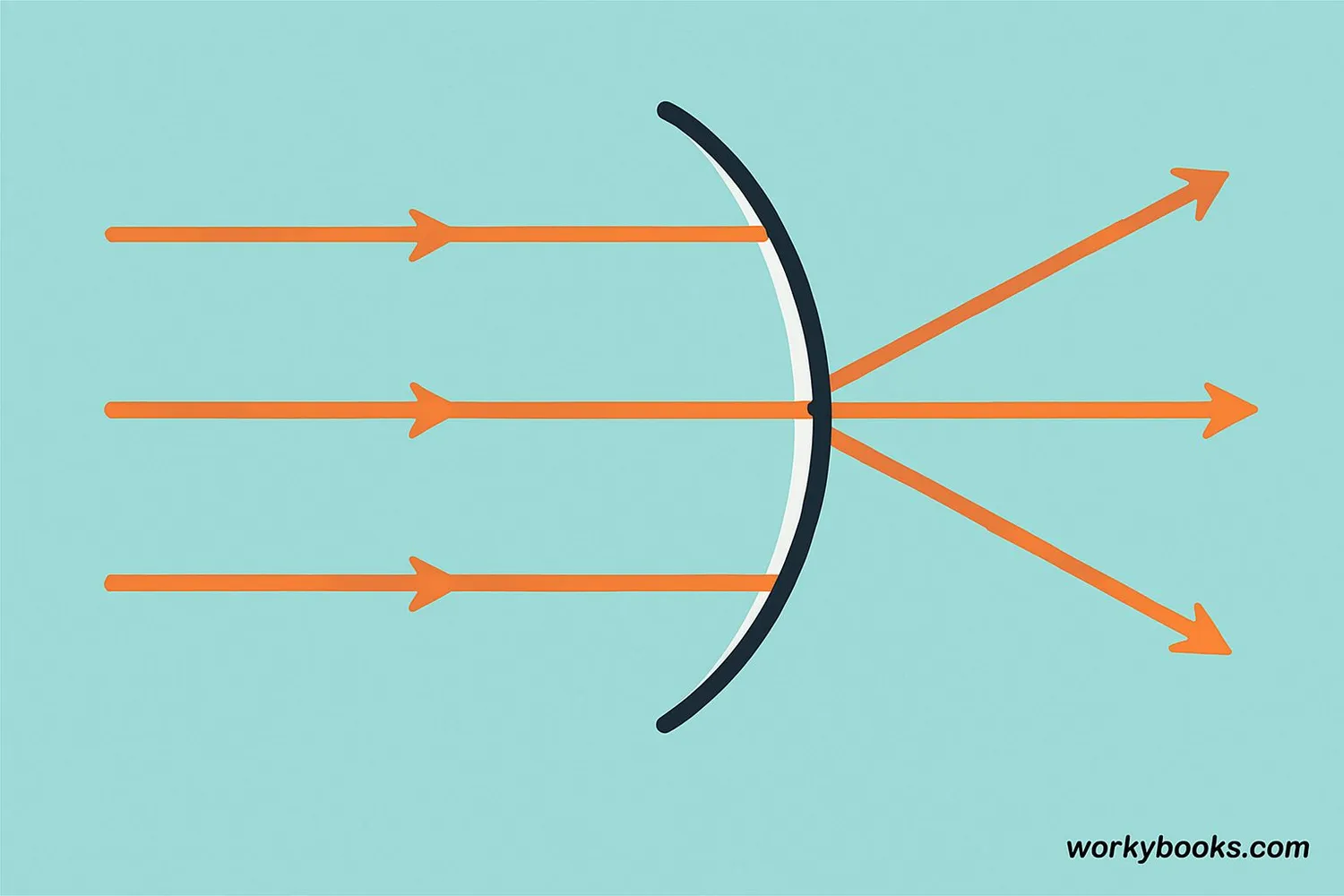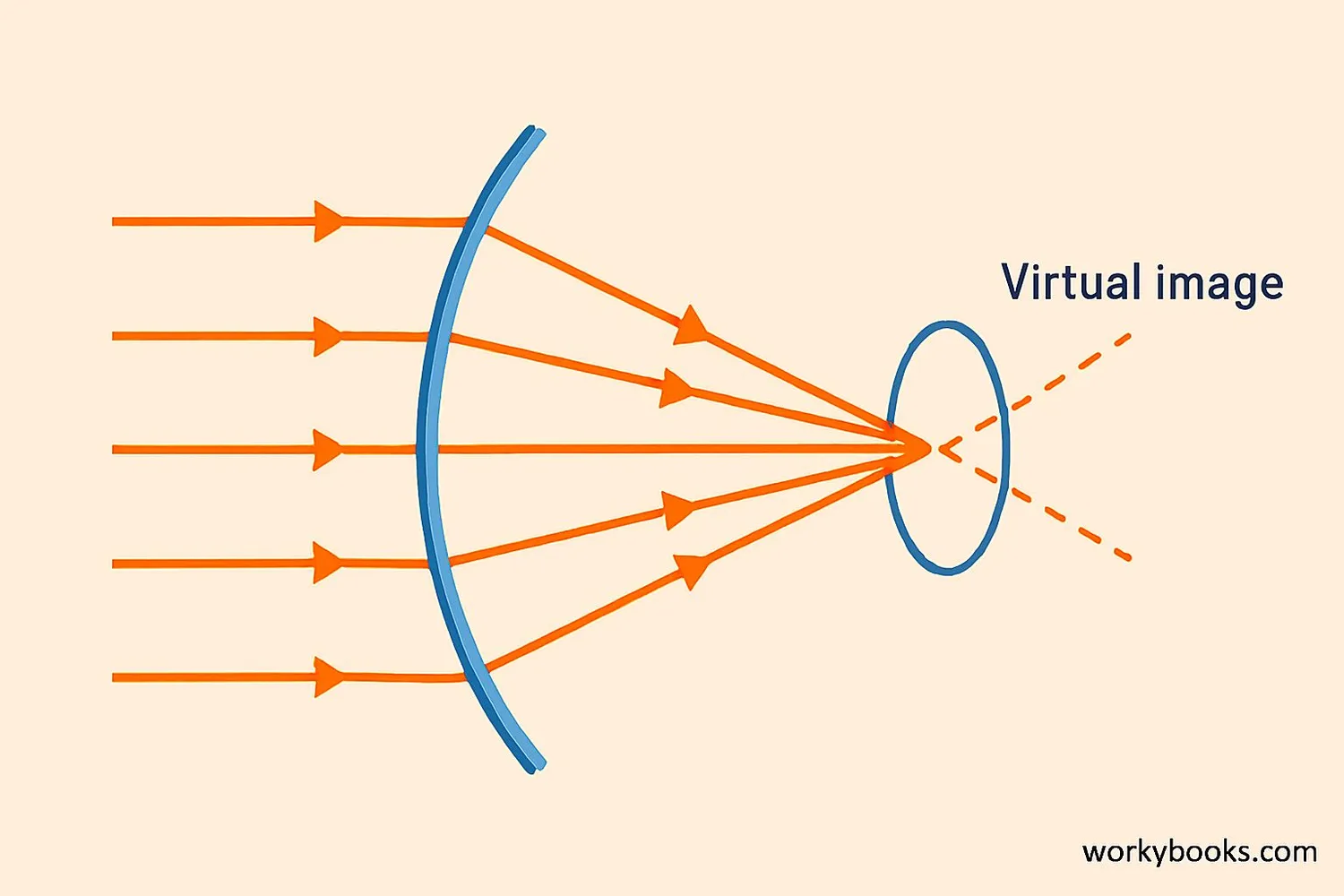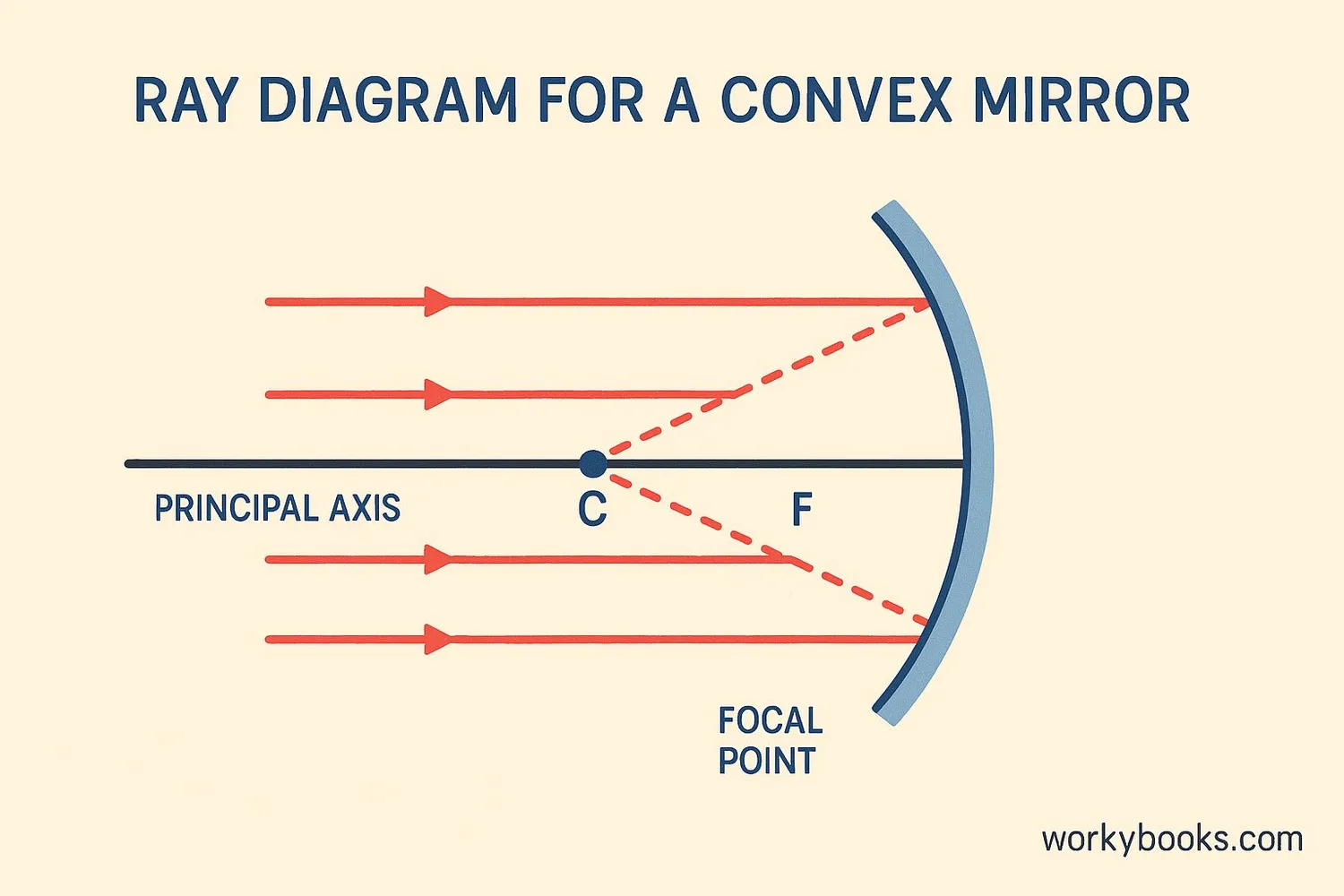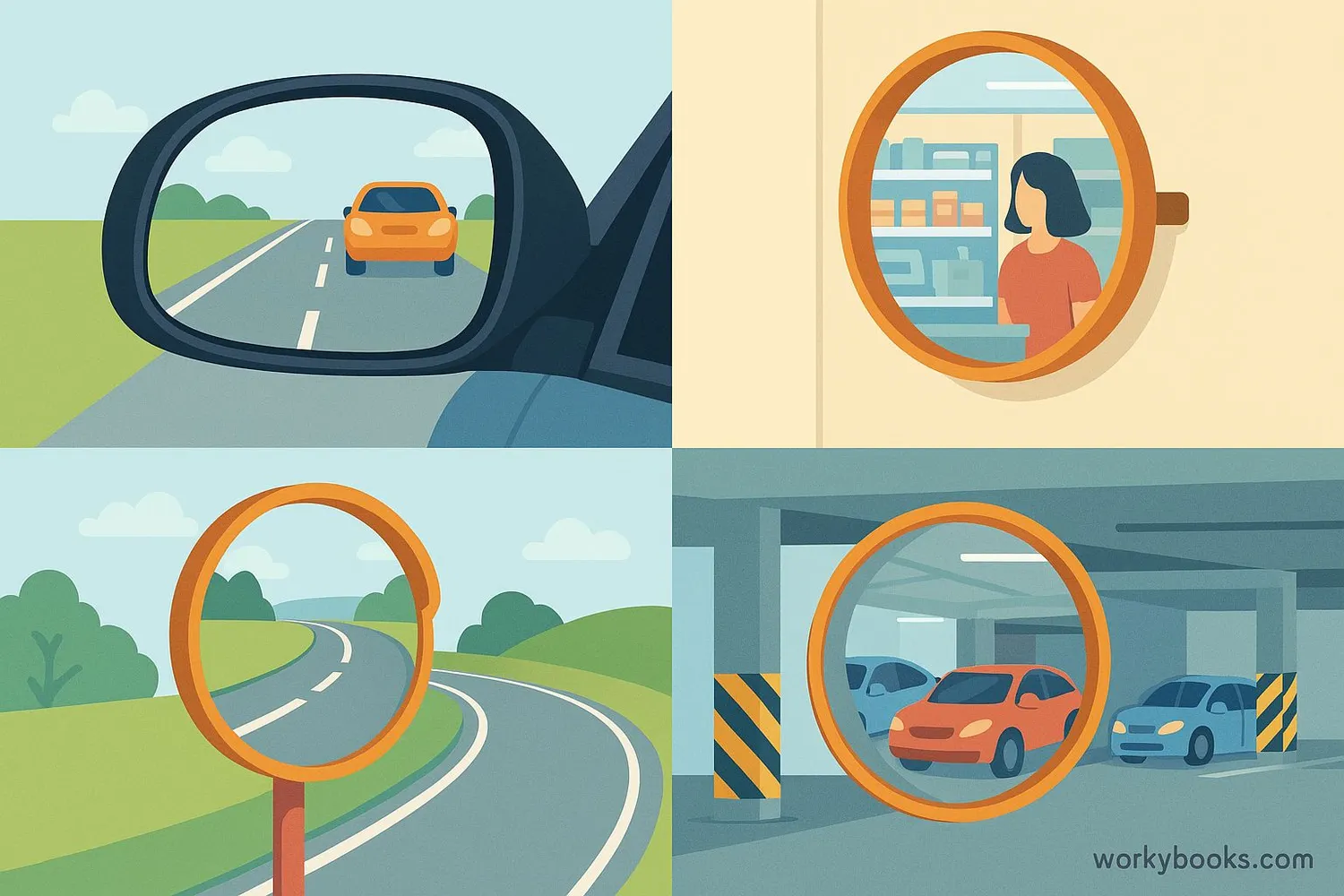Convex Mirror - Definition, Examples, Quiz, FAQ, Trivia
Discover how convex mirrors work and where we see them in everyday life!
What is a Convex Mirror?

A convex mirror is a curved mirror where the reflective surface bulges outward, like the back of a spoon. It's also called a diverging mirror because it causes light rays to spread out (diverge) when they reflect off its surface.
Unlike flat mirrors that show things as they are, convex mirrors make objects appear smaller and show a wider view of what's in front of them. That's why they're perfect for seeing around corners or in tight spaces!
Mirror Fact!
Convex mirrors are sometimes called "fish-eye mirrors" because they create a similar effect to how fish see the world above water!
Properties of Convex Mirrors

Convex mirrors have special properties that make them useful in many situations. Here are their key characteristics:
Virtual Images
Convex mirrors always form virtual images that appear behind the mirror
Upright Images
Images in convex mirrors are always upright, never upside down
Diminished Size
Objects appear smaller than their actual size
Wide Field of View
They show a larger area than flat mirrors of the same size
Outward Curve
The center bulges outward while the edges curve inward
These properties make convex mirrors especially useful for safety applications where seeing a wide area is more important than seeing clear details.
How Convex Mirrors Work

Convex mirrors work by reflecting light rays outward, making them diverge (spread apart). Here's what happens step by step:
Light Hits the Mirror
Light rays from an object travel toward the convex mirror
Rays Diverge
The curved surface causes the light rays to spread out after reflection
Virtual Image Forms
Our eyes see the diverging rays as coming from a point behind the mirror, creating a virtual image
The special thing about convex mirrors is that they always make images appear:
• Smaller than the actual object
• Upright (not upside down)
• Located behind the mirror surface
• Visible across a wide area
This happens because the mirror curves outward, causing light rays to spread apart rather than come together.
Uses of Convex Mirrors

Because of their wide field of view and ability to show more area, convex mirrors have many practical uses:
Vehicle Side Mirrors
Passenger-side mirrors in cars show a wider view to help drivers see more of the road
Security Mirrors
Used in stores to prevent shoplifting and help staff monitor aisles
Road Safety
Placed at dangerous intersections and blind corners to improve visibility
Building Security
Used at building entrances and in parking garages for safety
Large Vehicles
Helps drivers of buses and trucks see areas around their vehicles
The next time you're in a car, look at the passenger-side mirror. Notice how it shows a wider area than the driver's side mirror? That's because it's convex! Also, look for these mirrors in stores - they're usually placed up in corners so employees can see down the aisles.
Convex Mirror Quiz
Test your knowledge about convex mirrors with this quiz! Answer all 5 questions to see how much you've learned.
Frequently Asked Questions
Here are answers to some common questions about convex mirrors:
Fun Convex Mirror Trivia
Discover some amazing facts about convex mirrors!
Ancient Invention
The earliest known convex mirrors date back to ancient Rome! Archaeologists have found small convex mirrors made of polished bronze and silver from the 1st century AD.
Artistic Mirrors
Famous artists like Jan van Eyck included convex mirrors in their paintings during the Renaissance. His 1434 painting "Arnolfini Portrait" features a detailed convex mirror in the background.
Space Applications
Convex mirrors are used in some space telescopes! They help scientists monitor instruments inside the telescope without obstructing the main mirror's view of space.
Safety Impact
Studies show that installing convex mirrors at dangerous intersections can reduce accidents by up to 60%! Their wide view helps drivers spot oncoming traffic from side roads.


